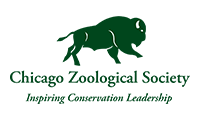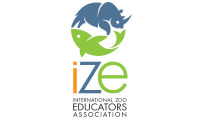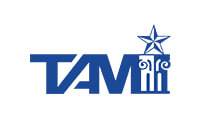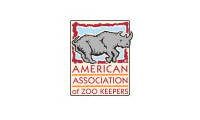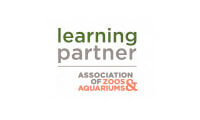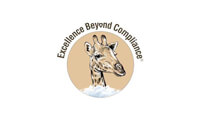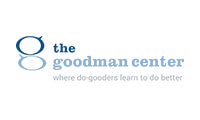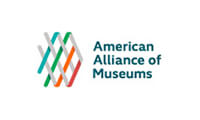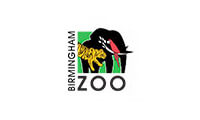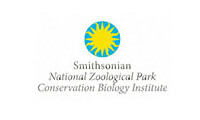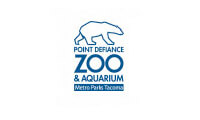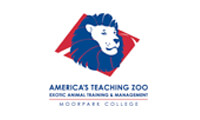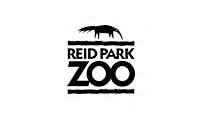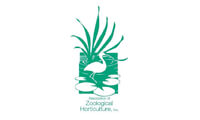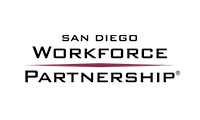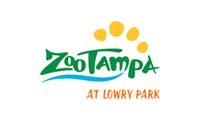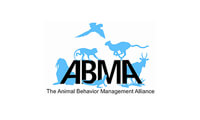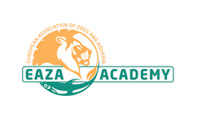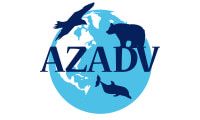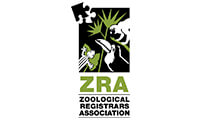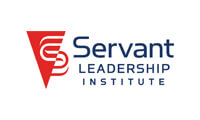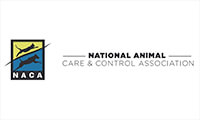Getting Better All the Time
Still Working with All My Heart to Do More Good to Advance Animals’ Interests, Protection, and Well-being
By James F. Gesualdi
To keep ahead, each one of us, no matter what our task, must search for new and better methods—for even that which we now do well must be done better tomorrow.
—James F. Bell
Thanks Is Always a Fine Place to Start
Thank you for reading this column right now, and any other time it has appeared on a screen or a page before you. This marks the eighth anniversary of the Getting Better All the Time column. To date, there have been 72—about 9 a year. Each column has provided an opportunity for exploration, growth, and advancement. As the author, I have utilized these columns to think, write, act, and live better—personally and professionally. Progress has been made on this side of the column, and also, joyfully, out there in the zoological world.
Any good that has come from these words has only been possible because of the efforts, help, and support of countless people along the way, including Ted Molter, Wendy Bulger, Esq., Jon Prange (who gave the column a worthier title than I had suggested), Gary Priest, Dr. Rob Jones, Dr. Don Janssen, and the entire outstanding Academy team, who transform these words and submissions into published form, ready to read and act upon.
All the good that has resulted is attributable to those of you who have read, shared, and made use of these columns, professionally and personally. Your good work and good works on behalf of animals, and each other, often inspire and sustain this grateful heart.
More good is to come, especially with the glorious benefit of continuing to learn from your comments, feedback, and suggestions. To commemorate this milestone of eight years of putting everything into this one thing, at the end of the column is a complete list of all the previous Getting Better All the Time messages, along with a link to the San Diego Zoo Wildlife Alliance Academy newsletter archive where you can read them. The Excellence Beyond Compliance® book (2014) and the columns (2015 to date) provide a complete field guide to doing our best with ourselves, and on behalf of animals and people.
These eight years have been filled with challenges and opportunities, and marked by dramatic changes, all of which have been addressed throughout the columns.
More on Leveraging the New Animal Welfare Act (AWA) Bird Regulations to Help Other Animals
Close and ongoing examination of the new bird regulations continues to yield lessons for further advances. Although largely performance-based, in order to account for application to a large number of diverse avian species, the bird regulations contain many details and elements that could improve the standards for other groups of species—especially all of those who come under Subpart F: other warm-blooded animals (other than dogs, cats, rabbits, hamsters, guinea pigs, nonhuman primates, and marine mammals). Here is a representative sampling of key provisions in the bird regulations, which should be employed to clarify and update standards for other warm-blooded animals (as well as other species covered under the AWA). All references can be found in the Federal Register notice for the final bird regulations, 88 Fed. Reg. 10654, 10713 – 10721, found here.
9 C.F.R. § 3.150, Facilities, general
The subsections of this regulation are much more detailed. For example, structures must employ "security measures that contain the birds securely" and provide "safety pens" or protection areas for flight-restricted birds overnight. Condition and site are to be kept "neat and free of clutter."
9 C.F.R. § 3.154, Environment enhancement to promote psychological well-being
This has been covered in a number of columns, and it is one of the most significant advances in the bird regulations (and to potentially come from the recent Advanced Notice of Proposed Rulemaking on a variety of areas applicable to all species). Good animal welfare and animal well-being requires evolving, ongoing, substantial, and meaningful enrichment. A good start for birds and let’s hope good for all species in the future. The regulations require enrichment by "materials and activities that would provide the birds with the means to express non-injurious species-typical activities." 9 C.F.R. § 3.154 (b), 88 Fed. Reg. at 10717. (It is acknowledged that enlightened, responsible organizations already do much of this, and we can still do better and do more as discussed later with respect to the Advanced Notice of Proposed Rulemaking).
9 C.F.R. § 3.159, Employees
This tracks the standard for other warm-blooded animals, then adds a bit of specificity in stating that the employees must be under the supervision of "a head caretaker who has appropriate experience in the husbandry and care of birds in a given setting." That seems much better for birds than simply calling for someone who "has a background in animal care." See 9 C.F.R. § 3.132.
9 C.F.R. § 3.152, Facilities, outdoor
This contains a specific subsection on acclimation referencing humidity and temperature ranges, as well as temperatures of various water features. Shelter from inclement weather requires protecting the birds from the sun, precipitation, and rain ... and adverse weather conditions, including having adequate ventilation in hot weather. There must be adequate space to comfortably contain all the birds at one time "without adverse intraspecific aggression or grouping of noncompatible birds." Special consideration is to be afforded to birds low in the hierarchy in relevant species.
9 C.F.R. § 3.153 (c), Special space requirements for wading and aquatic birds
These birds must be provided with appropriate aquatic and dry areas, with sufficient area and depth and allow for freedom of movement "to escape from aggression demonstrated by other birds in the enclosure." [Note: as written in this column with respect to the proposed rule, one further modification the agency should consider is adding flight zone standards for flighted birds.]
9 C.F.R. § 3.160, Compatibility and separation
This standard’s caption makes clear the requirements are that animals—birds—that are housed together be compatible, or be separated. In subsection (b), compatibility may be at issue when access to food, water, or shelter is prevented and individual animals are "known to be hazardous to the health and well-being of each other." Be mindful of this in making compatibility judgments and separation decisions: "Compatibility must be determined in accordance with generally accepted professional practices and by actual observations that ensure the birds are, in fact, compatible." 88 Fed. Reg. at 10719. Frequent and regular observations, good recordkeeping, and documenting and referencing sources of "generally accepted professional practices" are essential. Be sure your efforts, including understanding of "generally accepted professional practices," are in accordance with this standard.
In subsection (a) of Compatibility and separation, the agency makes clear that "Socially dependent birds, such as clutch-mates, must be housed in social groups, except when the attending veterinarian exempts an individual bird because of its health or condition, or in consideration of its well-being, or for specific management needs..." 88 Fed. Reg. at 10718.
The above examples reflect the great potential for the agency, on its own initiative, or stakeholders via petition, to begin to reshape, update, and improve the regulations for other species, based on the bird regulations. It took two long decades to bring the bird regulations to life. Other species and many individual animals can benefit from that effort, and those changes can commence right now.
Some Brief Thoughts on the Recent Animal Welfare Act Advanced Notice of Proposed Rulemaking on Various Subjects
The January 9, 2023 Advanced Notice of Proposed Rulemaking is a broad request for comments and input regarding several potential agency measures. The extended comment period closed April 10, 2023 (read here). This column has previously touched upon the importance of this effort, and encouraged the sharing of expertise directed to assisting and demonstrating better ways to help animals (see the January 2023 Getting Better All the Time column, Learning From Life Itself Helps Us Positively Impact Animals' Lives). Below are some additional thoughts:
Definition of Category 1, 2, and 3 Animals
Set forth in the context of public contact programs, there are other likely regulatory and liability related consequences.
- If animals and species are classified into perceived high, higher, or highest risk categories, should those animals or species also require special authorization to be maintained as part of the new licensing requirements?
- Will the presence and number of animals in high, higher, or highest risk categories be factored into inspection frequency under the Risk Based Inspection System?
- Will the agency develop and propose, and/or can the zoological community demonstrate, effective additional safeguards to properly maintain and care for high, higher, and/or highest risk animals or species?
- If such categories are promulgated, what else can the zoological community do to mitigate and prevent potential risks and reduce associated liabilities?
Types of public contact activities
Although not intended forms of public contact activities/programs, two other instances of potential public contact should be noted as well as the appropriateness of addressing them via a required contingency plan (9 C.F.R. § 2.134). These two items include (1) public guest/visitor, or contractor or criminal action, breaking into an animal’s enclosure and being together in the same space (a variant of this might involve an employee and an animal unintentionally in the same space, but that would not be "public contact"); and (2) animal escape into public areas of the facility and/or off site (whether originally on site or in an off-site program). Mentioning these is for the purpose of completeness.
Generally, there are many things responsible organizations and facilities can do to enhance and maintain safe forms of "public contact," including properly informing, preparing, and instructing guests; properly selecting suitable animals, and adequately training them so any contact is comfortable, enriching, and safe for the animal (and the people); adequate pre-, ongoing-, and post-participation observations and veterinary evaluations; adequate supervision and monitoring of animals and program participants (with appropriate numbers of experienced, well-trained staff, animals, and participants); removal of animals exhibiting discomfort and/or undesirable behavior; removal of participants exhibiting undesirable behavior, including not adhering to instructions and rules; and good recordkeeping regarding program sessions, especially any negative observations or incidents of injury. These can largely be addressed through various existing regulations governing public handling (9 C.F.R. § 2.131), employees (various sections), veterinary care (various sections, e.g., 9 C.F.R. § 2.40 and 3.110), and others. While new regulations may ultimately be beneficial and warranted, another alternative would be an extensive addition to the Animal Welfare Inspection Guide, detailing the inspection of different forms of public contact activities pursuant to various existing regulations.
Training of individuals handling wild or exotic animals.
A good place to start here would involve a continuation of the more detailed training requirements for marine mammals, developed during the Marine Mammal Negotiated Rulemaking. 9 C.F.R. § 3.108. These requirements, developed by consensus among the stakeholders, provide "Trainers and handlers must meet professionally recognized standards for experience and training." In the preamble to the proposed/final rule, the agency noted that the professional standards of the International Marine Animal Trainers Association would satisfy that requirement. 64 Fed. Reg. 8735, 8740 (Feb. 23, 1998). The recently enacted bird regulations add another element worthy of consideration here. That is, the caretaker should have "appropriate experience in the husbandry and care of birds that are being managed in a given setting." Thus, there should be specific experience in a public contact setting; the more intensive the public contact, the greater the experience needed.
Environmental Enrichment for animals
As noted previously, and in this column with respect to the new bird regulations, environmental enrichment should be provided for all animals and species covered under the AWA.
With respect to the provision and regulation of environmental enrichment, the agency must give additional consideration to the beneficial effect of allowing social animals to live in groups, in large natural spaces—both of which are truly enriching in that animals learn to forage, interact, and engage in a full range of natural behaviors that enable animals to grow and thrive as the creatures they were born to be. This may require closer observation and advanced management oversight to reduce potential negative impacts associated with establishment of dominance hierarchies. On this point, the bird regulations note the use of sufficient space for animals to take refuge or remove themselves from others.
Enrichment or animal care and husbandry generally should seek to give the animals learning experiences that provide them with greater agency and autonomy in controlling their environment and their lives. This is the way forward in terms of animal care, husbandry, and the AWA (though other regulatory provisions may need adjusting as well). The San Diego Zoo Wildlife Alliance’s own Greg A. Vicino, Jessica J. Sheftel and Louisa M. Radosevich, authored an insightful 2022 article "Enrichment is Simple, That’s the Problem: Using Outcome Based Husbandry to Shift from Enrichment to Experience," which demonstrates how to make such a game-changing approach work for the ongoing benefit of the animals and their well-being.
Bits of Wisdom From Along the Journey
Given the interconnectedness of all living things (and other things), a few recent experiences provided inspiration and insights still being integrated into this author’s own practical philosophy for living and practicing law (including Excellence Beyond Compliance).
Finding Solitude, Going Inward, Yearning for Deeper Connection to Things Bigger Than Ourselves, and Love
After a week at sea, I spent a weekend at a seminary on the water here on Long Island’s lovely North Shore for a parish retreat. The retreat team, including two of our priests, and the fellow participants were all wonderful people. The experiences they shared were deeply moving. Among the things learned—especially from Rev. John Crozier, whose earnestness and youthful enthusiasm added to his keen insights—was that "breakdown leads to breakthrough." It certainly may not seem so, particularly in our darkest and weakest moments, but it is where we have faith (including in ourselves and others), learn from the situation, and keep moving forward. Two of the attendees, Kathy and Valerie, shared this quote they attributed to St. Ignatius of Loyola: "Not where I breathe, but where I love is where I live." Pause. Reread that, and give yourself a moment. Those beautiful words touched my heart so deeply, and gave my life’s work and those words greater meaning. The same should be true for you. The love we bring and the love we give—to animals, others, this world, and our work—is so much greater than the tiny, insignificant space we occupy during our finite existence. Love and keep loving. Lawyering from the heart, caregiving from the heart, educating from the heart, tending facilities from the heart, and so on...growing more enlightened by drawing upon the love and wisdom of all those people smarter than we are in one or more ways.
Getting Better All the Time by Exploring All Around for Opportunities to Continuously Improve
The latest AWA regulation is significant in and of itself, and it also provides the foundation for new and better regulations relating to all species. The agency’s broad request for input on a variety of subjects opens the door to more constructive engagement, sharing of expertise, and regulatory advances. A host of nonregulatory activities and experiences open the heart and mind, drive deeper examination of ourselves and our relationships with nonhuman animals, and expand our consciousness for the better, driving further advances. Getting better all the time—8 years and onward!
The Complete Listing of "Getting Better All the Time" Columns (view in the SDZWA Academy newsletter archives)
Name It, April 2015.
Be There, May 2015.
You Can, June 2015.
Today Matters, July 2015.
The Magic Power of Words, August 2015.
Building Blocks: Key Leaders, Self-Examination, Entrance Briefings, and Inspection Checklists, September 2015.
Can You Hear Me Now: Effective Listening for Better Outcomes, October 2015.
Turning Challenges into Opportunities: The Principles of Constructive Engagement, November 2015.
Opportunities Abound, December 2015.
Learning to Facilitate Change for the Better, January 2016.
Comforting Animals and Their Caregivers, February 2016.
Sustaining Continuous Improvement through Professional Development, March 2016.
A Year of Learning Together Lays Out the Path Forward, April 2016.
Doing Greater Good for the Animals in Our Care, May 2016.
Challenges, Concerns, and Criticisms Open the Door to Constructive Conversation, June 2016.
Lift Yourself Up, July 2016.
The 50th Anniversary of the U.S. Animal Welfare Act, August 2016.
Learning From Your Successes and Challenges, September 2016.
Humility, Civility, and the Public Trust, October 2016.
Giving of Ourselves, Planning Thoughtfully, and Thanksgiving for Caregiving, November 2016.
Bringing People Together to Make a Difference (for Animals and People), December 2016.
Training Ourselves to Better Serve Animals (with Patricia A. Milito), January 2017.
Changing for Good, February 2017.
Making Inspection Reports Work For Animals, March 2017.
Keeping People Safe to Protect Animals, April 2017.
Gratitude for Growth by Learning, May 2017.
An Enlightened Caregiver's Creed on Serving Animal Interests and Well-being, June 2017.
Leveraging Animal Welfare Act and USDA Information Resources to Do More for Animals, July 2017.
Caring Professionals Dedicated to the Well-being of Animals, August 2017.
More Effectively Doing Right By Animals, September 2017.
Improving Animals' Lives Every Day, November 2017.
A Cost-effective and Time-effective Way to Proactively Promote AWA Compliance and Enhance Animal Welfare, December 2017.
Applying USDA Guidance to Improve Yourself, Strengthen Your Team and Organization, and Better Serve Animals, January 2018.
The Changes We Seek for Animals and People Start from Within, March 2018.
A Responsible Framework for Utilizing Third-party Reviews to Advance Animal Welfare and Provide Greater Transparency, May 2018.
Doing Makes the Difference in Becoming the Best We Can Be in Championing Animals' Interests, August 2018.
Serving Gratefully Is the Highest Form of Giving Thanks, November 2018.
Meaningful Holiday Gifts in Service of Animals and Their Well-being, December 2018.
Making All the Difference in the World Starts with One Thought or Idea, One Action, and One Animal (with Sabrina Brando), January 2019.
Tending to One's Own Wellness, February 2019.
Progress Without Judgment: Shifting from Being Right to Doing Right for Animals, March 2019.
Four Years of Continuously Improving in Our Mission to Serve Animals, Their Interests, and Their Well-being, April 2019.
Sharing Our Experiences, Expertise, and Insights Makes Us All Better, May 2019.
Shining a Light on Others' Good Works, June 2019.
Being Dedicated to the Animals Entrusted to Your Care (with Patricia A. Milito), July 2019.
Supporting the cause of animal protection: words from the heart, November 2019.
Making It All About the Animals Makes All the Difference, December 2019.
Investing Our Thoughts and Actions in this Moment—to Continuously Improve Things That Matter, February 2020.
Understanding How the World Sees You Through the Animal Welfare Act Database, and Mastering That Knowledge to Help Animals, March 2020.
Now More Than Ever, We Are All in This Together: Here’s How We Will Get Through This, April 2020.
Staying Focused on Doing Our Part to Keep Pushing Forward Together, May 2020.
Animal Welfare Act Compliance: Necessary for Lawful Operation, Essential During a Pandemic, and the Starting Point for Successful Animal Welfare Programs, June 2020.
Providing Good "Insurance" For the Animals in Zoological Organization Care – Through the Latest Animal Welfare Act Developments and Guidance, July 2020.
Stake Out a Higher Perspective and Step Up Preparations Amid Great Uncertainty, as Well as Regulatory Change, to Come Out in a Better Place, August 2020.
Doing Good Work(s) Serving Animals and Others Changes Everything, September 2020.
How to Build Public Confidence and Trust, October 2020.
Seven Steps to Regulatory and Reputational Success with Animal Welfare Act Compliance, November 2020.
The Practice of Giving Thanks and How Mentoring Helps Us Help Animals, November 2020.
Creating a Better Future for the Zoological Community, One Zoological Organization at a Time—Starting with Yours, December 2020.
Leading from the Heart for Animals, May 2021.
Loving (and Respecting) Animals Out Loud—Without Saying a Word, August 2021.
Regulatory Developments Open the Door for Proactive, Constructive Action, September 2021.
Giving Thanks for Doing Work that Makes Our Lives ‘Good for Something,’ November 2021.
A Holiday Wish List for Making Animals’ Lives Better: Doing Good for Goodness Sake, December 2021.
With All of Our Caregiving, Caretaking, and Giving to Others, We Must Remember to Take Good Care of Ourselves, February 2022.
Joyfully, Lovingly, and Creatively Using Our Lives and the Animal Welfare Act to Safeguard Animals and People, May 2022.
Making Things Even Better—with What We Have, What We Learn Here, How We Think, and What We Create, August 2022.
Thinking About Thanksgiving in a Heartfelt New Way, November 2022.
Making the Most of the Gift We Receive Every Day, December 2022.
Learning From Life Itself Helps Us Positively Impact Animals' Lives, January 2023.
Caregiving Is Love in Action, February 2023.
Help in Navigating the New Animal Welfare Act Bird Regulations and Using Them to Make Things Better for Birds and Other Animals, March 2023.
© 2023 James F. Gesualdi, P.C. The opinions expressed herein are solely those of the author. This is not, nor should it be construed as, legal advice.

